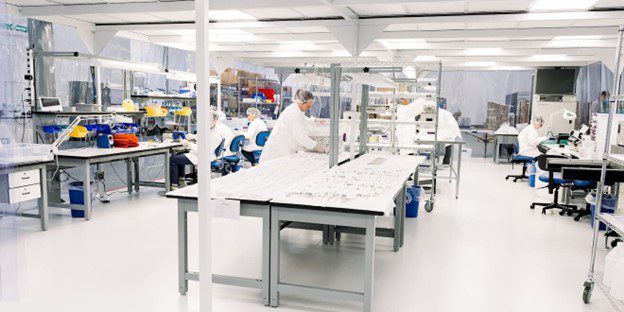GMP Cleanliness Classification

Introduction to GMP Cleanliness Classification
Good Manufacturing Practice (GMP) cleanliness classification is essential in industries such as pharmaceuticals, biotechnology, and food manufacturing. This classification ensures that environments are controlled to prevent contamination, ensuring product safety and efficacy. The classification system primarily follows the standards outlined in ISO 14644 and other regulatory frameworks.
CleanRoom Classification Standards
The cleanliness of controlled environments is classified based on the maximum allowable particle counts per cubic meter of air. For instance, a Class 100 Cleanroom allows a maximum of 3,520 particles ≥0.5 micrometers. In contrast, a Class 10,000 cleanroom permits up to 35,200 particles, significantly impacting the level of sterility achieved in pharmaceutical production.
ISO and FDA Guidelines
iso 14644-1 defines the classification of cleanrooms, while the FDA references similar classifications in its guidelines. For example, the FDA recognizes Class 100 as equivalent to ISO5, which is critical for aseptic processing. Compliance with these classifications ensures that facilities align with international standards, enhancing product quality.

Monitoring and Validation Requirements
Regular monitoring of cleanroom conditions is essential to maintain compliance with GMP. This includes real-time particle count measurements and environmental monitoring of temperature and humidity. For instance, a Class 100 Cleanroom must maintain a temperature typically between 20°C to 25°C and relative humidity below 60%, ensuring optimal conditions for manufacturing.
Cleaning and Maintenance Protocols
Effective cleaning and maintenance protocols are crucial for maintaining cleanliness classifications. Routine cleaning must be documented and performed using validated disinfectants. Type A cleaning, which includes daily surface cleaning, and Type B cleaning, involving deep cleaning, are integral to ensuring compliance with GMP standards.
The Requirements for GMP Cleanroom

Controlled Environment
GMP cleanrooms must maintain strict control over environmental conditions, including temperature and humidity. Typically, temperatures range from 20°C to 25°C, with humidity levels kept below 60% to prevent contamination and ensure product integrity.
Air Quality Management
Cleanrooms require high-efficiency filtration systems to manage air quality. HEPA or ULPA filters are commonly used to remove airborne particles, ensuring that the air quality meets the required cleanliness standards for the specific classification of the cleanroom.
Personnel Training
All personnel working in GMP cleanrooms must undergo specialized training. This training covers contamination control, proper gowning procedures, and the importance of maintaining a clean environment, ensuring compliance with GMP regulations.
What are the Clean Room Classification Limits?

1. Class 100 Limits
For a Class 100 cleanroom, the maximum allowable particle count is 3,520 particles per cubic meter for particles ≥0.5 micrometers. This stringent limit is essential for environments where sterile conditions are paramount, such as in pharmaceutical manufacturing.
2. Class 1000 Limits
In a Class 1000 cleanroom, the allowable particle count increases to 35,200 particles per cubic meter for the same size particles. This classification is suitable for less critical processes where moderate cleanliness is acceptable, balancing cost and cleanliness requirements.
3. FDA Classifications
The FDA categorizes cleanrooms into Classes A, B, C, and D, aligning closely with ISO standards. Class A environments, for example, must meet similar particle limits as Class 100 Cleanrooms, emphasizing the importance of cleanliness in sterile operations.
GMP Cleaning

1. Cleaning Protocols: GMP cleaning involves established protocols to maintain cleanliness in controlled environments. Protocols include routine cleaning schedules, use of validated cleaning agents, and specific procedures for cleaning surfaces and equipment to prevent contamination.
2. Disinfectant Selection: Selecting the right disinfectants is crucial for effective GMP cleaning. Disinfectants must be validated for efficacy against specific contaminants and compatible with the materials being cleaned, ensuring they do not damage surfaces or equipment.
3. Documentation and Compliance: Thorough documentation of cleaning procedures is essential in GMP environments. Records should detail cleaning schedules, agents used, and personnel involved. This documentation supports compliance with regulatory requirements and helps in audits.
What Does Class 100 and Class 1000 Clean room Mean?

Understanding Class 100
A Class 100 cleanroom maintains a maximum of 3,520 particles per cubic meter for particles ≥0.5 micrometers. This classification is essential for processes requiring high sterility levels, such as aseptic drug manufacturing and sensitive electronic assembly.
Characteristics of Class 100
Class 100 Cleanrooms must utilize high-efficiency particulate air (HEPA) filters to achieve the required air cleanliness. The cleanroom's design and operational protocols must minimize airflow disruptions, ensuring a consistent clean environment.

Understanding Class 1000
A Class 1000 cleanroom allows up to 35,200 particles per cubic meter for particles ≥0.5 micrometers. This classification is suitable for environments where moderate cleanliness is acceptable, such as in the manufacturing of non-sterile pharmaceuticals or medical devices.
Characteristics of Class 1000
Class 1000 cleanrooms are less stringent than Class 100, but still require effective air filtration systems. The operational practices should still focus on minimizing contamination risks, although they may not need to adhere to the same rigorous standards as Class 100.
 +86 18186671616
+86 18186671616 Jason@cleanroomequips.com
Jason@cleanroomequips.com
 MENU
MENU




















